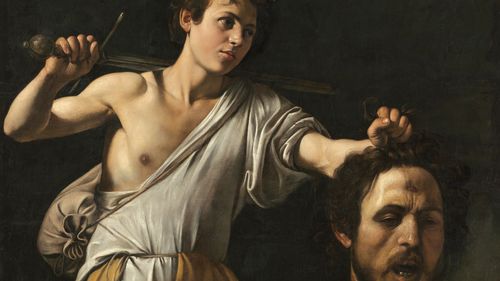Caravaggio's "David with the Head of Goliath": What it Means (and Why You Should Care)
Mar 05, 2024 · 2 mins read
0
Share

Caravaggio's "David with the Head of Goliath" is a masterpiece steeped in darkness and redemption, a canvas where personal and biblical narratives collide with raw emotion.
Save
Share
Painted in 1609-1610, this work is often seen as Caravaggio's meditation on his own turbulent life, with David's solemn expression reflecting the artist's remorse.
Save
Share
The painting is a masterclass in chiaroscuro, Caravaggio's signature play of light and shadow, which brings a dramatic intensity to the young David's victory and Goliath's defeat.
Save
Share
Uniquely, Caravaggio portrays himself as Goliath, a self-portrait that serves as a confession and a plea for mercy during a time when he was seeking a papal pardon for murder.
Save
Share
David is depicted not with triumph, but with a pensive, almost mournful demeanor, suggesting a reflection on the cost of violence, a sentiment that resonates in our current times.
Save
Share
The work's realism is striking; from the blood on Goliath's forehead to the dirt under David's fingernails, Caravaggio's attention to detail anchors the biblical in the human experience.
Save
Share
This painting diverges from traditional depictions of David as a glorified hero, instead offering a nuanced portrayal that speaks to the complexities of youth, power, and consequence.
Save
Share
The severed head of Goliath is not just a trophy but a mirror to David's soul, a reminder of mortality and the shadows that lurk behind even the most righteous acts.
Save
Share
"David with the Head of Goliath" transcends its era, challenging viewers to consider themes of justice, repentance, and the duality of human nature.
Save
Share
Caravaggio's work remains a poignant reminder of art's power to convey deep psychological truths, inviting us to contemplate the weight of our choices and the possibility of redemption.
Save
Share
0